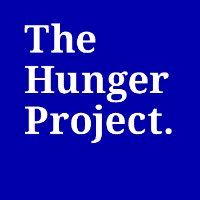Know Your World
Hunger is not just about food. Hunger is inextricably linked to a nexus of issues including: economic equality, health, education, social justice, the rights of women and girls and climate change. As an organization committed to growth through learning, we pay close attention to these issues. To end hunger once and for all, it’s important for all of us to know our world.
World Population
World Hunger Facts
Chronic hunger and malnourishment is worst in Asia, Africa and Latin America — the very regions we work in at The Hunger Project.
- 733 million people lived in hunger in 2023. Learn more about the state of hunger today.
- 99% of the world’s undernourished people live in mid- and low-income countries.
- 274 million people could need humanitarian assistance within the next year .
Women and Children
Women as change agents are essential to achieving the end of hunger and poverty. Which is why, everywhere we work, our programs build the capacity of women.
- Women and girls make up 60% of the world’s hungry.
- In sub-Saharan Africa, only 64% of births are attended by a medical doctor, midwife, or nurse.
- There are about 20 million low birthweight infants born each year, 96.5% of them in developing countries.
- Nearly half of all deaths in children under 5 are attributable to under-nutrition. This translates into the unnecessary loss of about 3 million young lives a year.
- Globally, the number of children under 5 who suffer from stunting is down to 149 million. In 2018, Africa and Asia accounted for more than nine out of ten of all stunted children in the world.
Poverty
Rural communities participating in our programs have access to income-generating workshops. For example, our Microfinance Program in Africa provides access to credit, adequate training and instilling in our partners the importance of saving.
- 736 million people, almost 1 in 10 people in the world, live under $1.90 a day, and over half of the extreme poor (413 million) live in Sub-Saharan Africa.
- Nearly 328 million children are living in extreme poverty.
HIV/AIDS and other Diseases
Our HIV/AIDS and Gender Inequality Campaign, launched in 2003, works at the grassroots level to provide education about preventative and treatment measures.
- 37.9 million people are living with HIV/AIDS.
- 74.9 million [58.3 million–98.1 million] people have become infected with HIV since the start of the epidemic.
- The vast majority of people living with HIV are located in low- and middle- income countries, with an estimated 25.6 million [23.2 million-28.2 million] living in Sub-Saharan Africa.
- Since 2010, new HIV infections among children have declined by 41%, from 280,000 [190,000-430,000] in 2010 to 160,000 [110,000-260,000] in 2018.
Agriculture
In each region in which we work, we ensure access to tools and training that increase farming production at the local level.
- 75% of the world’s poorest people live in rural areas and depend on agriculture and related activities for their livelihood.
- 50% of hungry people are farming families.
Water and sanitation
The Hunger Project works with communities to develop new water resources, ensure clean water and improved sanitation, and implement water conservation techniques.
- Globally, at least 2 billion people use a drinking water source contaminated with feces, and 785 million people lack even a basic drinking-water service.
- By 2025, half of the world’s population will be living in water-stressed areas.
- As of 2017, 55% of the global population lacked safely managed sanitation services.
- Each year, some 297,000 children under age 5 die due to diarrhea. Poor sanitation and contaminated water are also linked to transmission of diseases such as cholera, dysentery, hepatitis A, and typhoid.
- In countries experiencing conflict or unrest, children are 4 times less likely to use basic water services, and 2 times less likely to use basic sanitation services than children in other countries.
- There are big gaps in service between urban and rural areas. Two out of three people with safely managed drinking water and three out of five people with safely managed sanitation services live in urban areas. Of the 161 million people using untreated surface water (from lakes, rivers or irrigation channels), 150 million live in rural areas.
Make change happen. Invest in people.
Mailing address
The Hunger Project
110 West 30th Street, 6th Floor
New York, NY 10001
Get connected
Join the conversation on social, and stay connected with the latest from our partners around the world.
Stay informed
Subscribe to our newsletter to receive updates of latest news and events.
© The Hunger Project | Website by The Good Alliance





